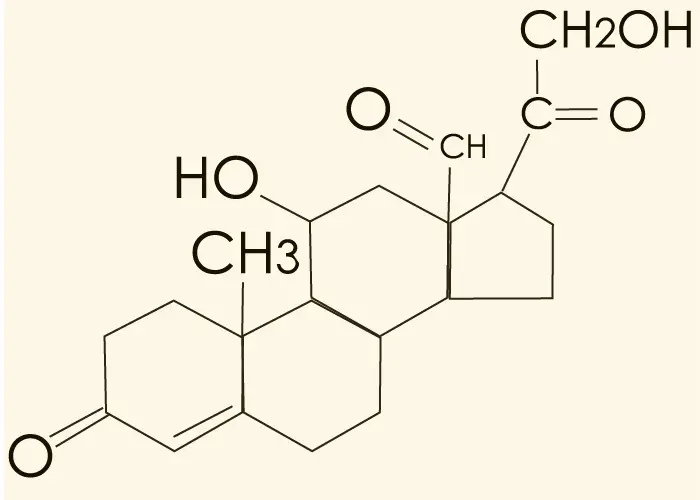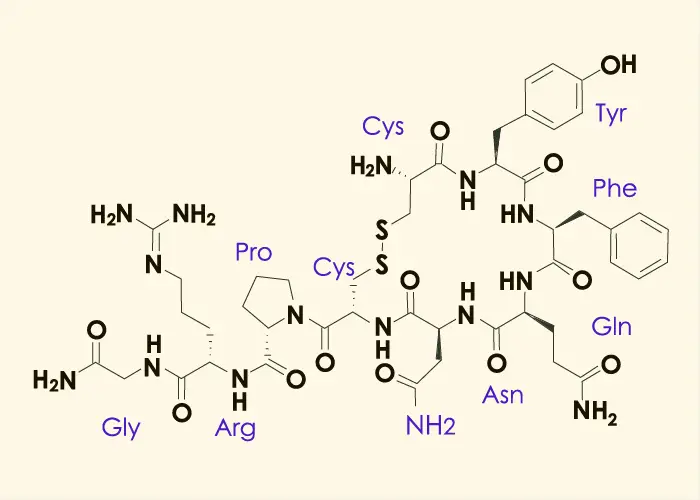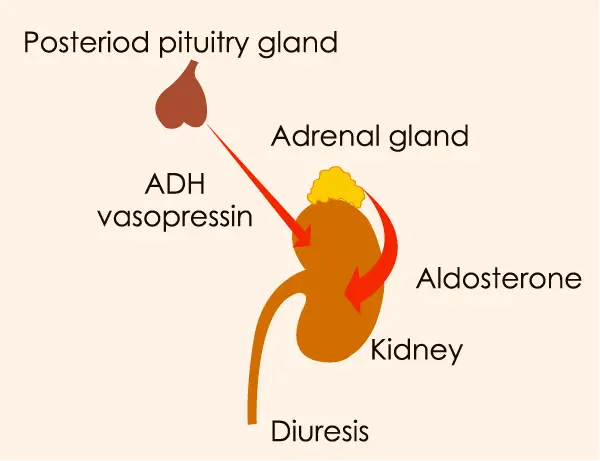
Antidiuretic hormone Vs Aldosterone Definition, Differences & Comparison
Endocrine system comprises of a complex set of organs which are called as glands. These organs secrete hormones.
The glands are responsible for the production, storage and secretion of these hormones. One or more hormones are produced by each gland which travels towards specific targeted organs or tissues within body.
also read: chondrichthyes and osteichthyes
Hence in other words, an endocrine system comprises of many different ductless glands which are responsible for the production of chemical substances called as hormones.
Hormones function individually and are required in low concentrations. They may take part in a chemical reaction or may function as a catalyst to speed up a reaction.
They are structurally protein. But they are not stored anywhere for usage except the glands or tissues which produce them.
Anti-diuretic hormone:
Anti-diuretic hormone or ADH is a hormone. It is also referred as the Argi-pressin, Vasopressin, or Arginine Vasopressin (AVP) hormone.
Coming from the hypothalamus, AHD is a neuro-secretary peptide hormone. It is produced and released by the posterior pituitary gland.
It regulates different metabolic process inside the body. ADH is released into the bloodstream from just beneath the hypothalamus.
ADH being protein in nature consists of 9 amino acids. These amino acids include Phenyl-alanine, Tyrosine, Asparagine, Glutamine, Arginine, Proline, Cysteine, Glycine etc.
This hormone is stored in the posterior pituitary gland inside the granular structures which are present at the axon terminals. It is transferred from these axon terminals towards the capillary beds of pars nervosa which is situated in posterior pituitary gland.

Aldosterone:
Aldosterone is a steroid based hormone just like Cortisol and is made up of cholesterol. This hormone is produced and secreted by the Adrenal cortex situated inside the Adrenal gland.

Inside the body, both of these hormones are released when the blood pressure is low. Both of them also affect the distal convoluted tubules and collecting tubules present inside nephrons of kidney.
Distal convoluted tubules become more water absorbent due to ADH. Under the influence of Aldosterone hormone these tubules become more absorbent for minerals. For example Sodium ions are minerals which due to the influence of Aldosterone results in water re absorption by creating osmotic pressure.
Functions of Anti-diuretic hormone:
- Osmoregulation is maintained when the amount of urine formed is controlled. For that purpose, ADH plays an important role in maintaining it.
- If all of the water gets filtered out, the body would be deficit. For that purpose, the water is preserved by the help of ADH which helps in re absorption.
- Even in small concentrations, ADH is capable of reabsorbing water back into the body through renal tubules. It helps in decreasing the amount of urine formed for excretion. It is called as anti dieresis.
- If the concentration of ADH is not enough, it could result in Diabetes Inspidus. An ailment where a person intakes a lot of water but the water is lost due to frequent urination. It is called as dieresis.
- It helps in raising blood pressure as a large dose of this hormone causes arterioles and capillaries to become constricted.
- It helps in stimulating and contracting the voluntary muscles of body.
- It helps in stimulating the plain muscles situated in digestive organs such as urinary bladder, ureter, intestine and uterus etc.
- This hormone act as a chemical messenger and travels to kidneys through blood.

Functions of Aldosterone:
- Aldosterone indirectly helps in preserving water by re absorbing sodium ions which creates an osmotic pressure.
- It helps in stimulating the absorption sodium ion through gut and also helps in decreasing the loss of sodium ions through saliva and sweat.
- The potassium ion secretion is promoted in the tubular lumen with the help of this hormone.
- It helps in the hydrogen ion secretion inside cortical collecting tubules.
- It helps in the metabolism of proteins, carbohydrates and fats.
- It acts as a receptor for mineral-corticoid. It also helps in influencing the neuro-genesis system of a part of brain called as dentate gyrus.
Antidiuretic Hormone and Aldosterone Differences:
Some of the most important differences between ADH and Aldosterone are stated below:
| Anti-Diuretic Hormone (ADH) | Aldosterone |
| 1. It is a peptide hormone. | It is a corticosteroid hormone. |
| 2. It is synthesized and then secreted from pituitary gland. | It is formed and released by adrenal cortex. |
| 3. It helps in preventing the formation of diluted urine. | It helps in maintaining the balance of salt and water by stimulating the absorption of sodium ions in nephrons of kidney. |
| 4. It is released in the body during the during the condition of dehydration. | It is released in the body when the body’s blood pressure is low. |
| 5. It helps increasing blood pressure by constricting capillaries and arterioles. | It does not produce any effect on blood pressure and blood vessels. |
| 6. It helpsin making DCT (distal convoluted tubule) and CT (collecting tutbule) more water absorbent. | It helps in making these tubules more mineral absorbent like more permeable to Na+ ions. |
| 7. It promotes reabsorption of water by stimulating kidneys. | It creates osmotic pressure to increase mineral and water absorption of kidneys. |
| 8. It is released when the blood isin hypertonic condition and when cholecytokinin is released for fat and protein digestion. | It is released when there is an increase in ACTH, potassium concentrations of serum and plasma angio-tensin III hormone etc. |
| 9. It secretion is inhibited by diuretics for example alcohol etc. | Its release is inhibited by dopamine, Angio-tensin converting enzyme or Atrial natriuretic hormone etc. |
Similarities between Antidiuretic hormone vs Aldosterone
- Both of these hormones help in increasing the re-absoption of water from nephrons.
- Both of these hormones act on collecting tubules (CT) and the distal convoluted tubules (DCT) inside nephrons of kidney.
- They both are secreted when the blood pressure is low.
- They both help in increasing the blood pressure by producing urine in concentrated form.
Does adh act on the distal convoluted tubule?
Yes, it acts upon collecting ducts and distal convoluted tubule, the key action of it is to regulate urine volume and osmolarity within the kidney. Also, the plasma osmolarity and adh emission in the body is directly proportional to each other.
Conclusion (vasopressin and aldosterone / adh vs avp)
Aldosterone and adh are two different hormones which help in increasing the reabsoption of water in kidneys. Both of these act on the DCT and collecting tubules which are present within nephron.
ADH acts directly as it is a peptide hormone. It helps in increasing the water permeability of tubules. On the other side, Aldosterone acts indirectly in water re-absorption by increasing the osmotic pressure.
So, in other words, the difference between both of these hormones is their way of mechanism or how they work inside the body.